I am happy to announce that the Pennsylvania Historical and Museum Commission recently approved 18 new historical markers!
As you’ll see from the list below, over half of the approved subjects are for markers in Philadelphia County. The Marker Program encourages broad distribution, so we’d love to see more individuals and organizations from Pennsylvania’s other 66 counties research their history and develop nominations for people, places, events, and innovations in their own backyard.
The following markers in Philadelphia were approved:
Dr. Leon H. Sullivan
As an African American Civil Rights leader, Sullivan promoted anti-discrimination and advocated many charitable and self-improvement programs for blacks in this country. He advised many US presidents and was involved in the movement to end Apartheid in South Africa.
The Hester Vaughn Trial
In 1868, a poor woman accused of killing her infant was convicted at trial and sentenced to be hanged. The fledgling Women’s Rights Movement led by Susan B. Anthony and Elizabeth Cady Stanton took up her cause and launched a media campaign claiming Vaughn had been denied a fair trial by a jury of her peers. Gov. John Geary pardoned Vaughn the following year.
Jefferson Street Ballparks
Baseball fields where both the first National League game and the first inter-racial game were played. They operated from 1864 to 1891 during the time when baseball evolved from an amateur leisure event to a competitive professional sport and “America’s pastime.”
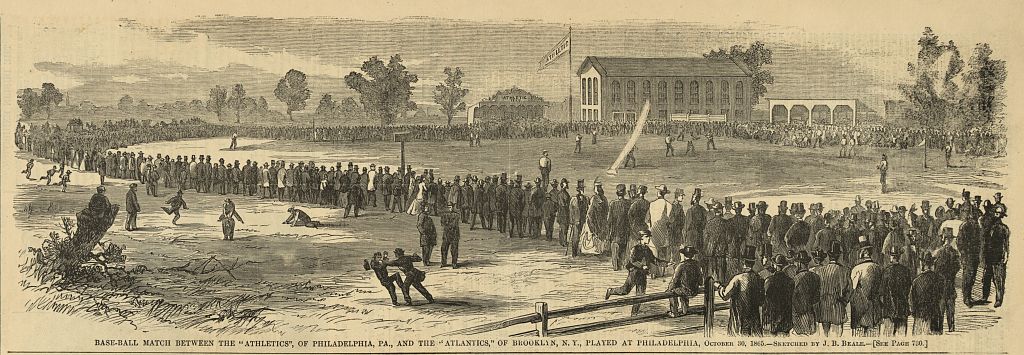
Beale, Joseph Boggs, Artist. Base-ball match between the “Athletics”, of Philadelphia, Pa., and the “Atlantics”, of Brooklyn, N.Y., played at Philadelphia, October 30, 1865 / sketched by J.B. Beale. Pennsylvania Philadelphia, 1865. Photograph. Retrieved from the Library of Congress, https://www.loc.gov/item/2008676717/. (Accessed June 12, 2017.)
The Jewish Hospital
This hospital opened in 1866 because of the marked expansion of the Jewish population in Philadelphia in the mid-19th century. Jews that became sick or injured had to go to hospitals that did not accommodate their religious traditions. Although open to all, this hospital provided kosher food and access to rabbis for the dying, and respected death and burial traditions of the Jewish faith.
John S. Trower
Mr. Trower was an African American businessman who became one of the wealthiest blacks in the US by the time of his death in 1911. Primarily a caterer and restaurateur, Trower invested his profits in real estate, established a trade school for African Americans, and donated generously to religious and charitable causes. He was noted in Booker T. Washington’s The Negro Business (1907).
Marc Blitzstein
Blitzstein was one of the 20th century’s most influential American composers and lyricists. Blitzstein was a contemporary of Aaron Copland and Virgil Thomson and a mentor to Leonard Bernstein. His controversial 1937 musical The Cradle Will Rock made musical history when it was shut down by the government due to its pro-union themes. His translation of Threepenny Opera has been performed worldwide.
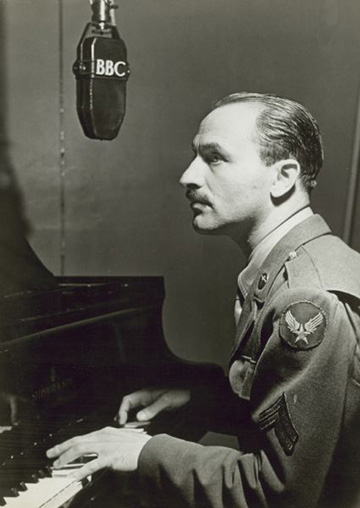
Publicity still of Marc Blitzstein in U.S. Army Air Corps uniform at the BBC in London, 1943. Source: http://www.wisconsinhistory.org/whi/fullRecord.asp?id=96371.
Mary Engle Pennington
Pennington received her PhD in chemistry in 1895 and went on to become a leader in research and implementation of food preservation measures. She investigated and improved commercial refrigeration and transportation of perishable food, very important during WWI for providing food to soldiers. She is credited with inventing the egg carton to safeguard eggs from breakage.
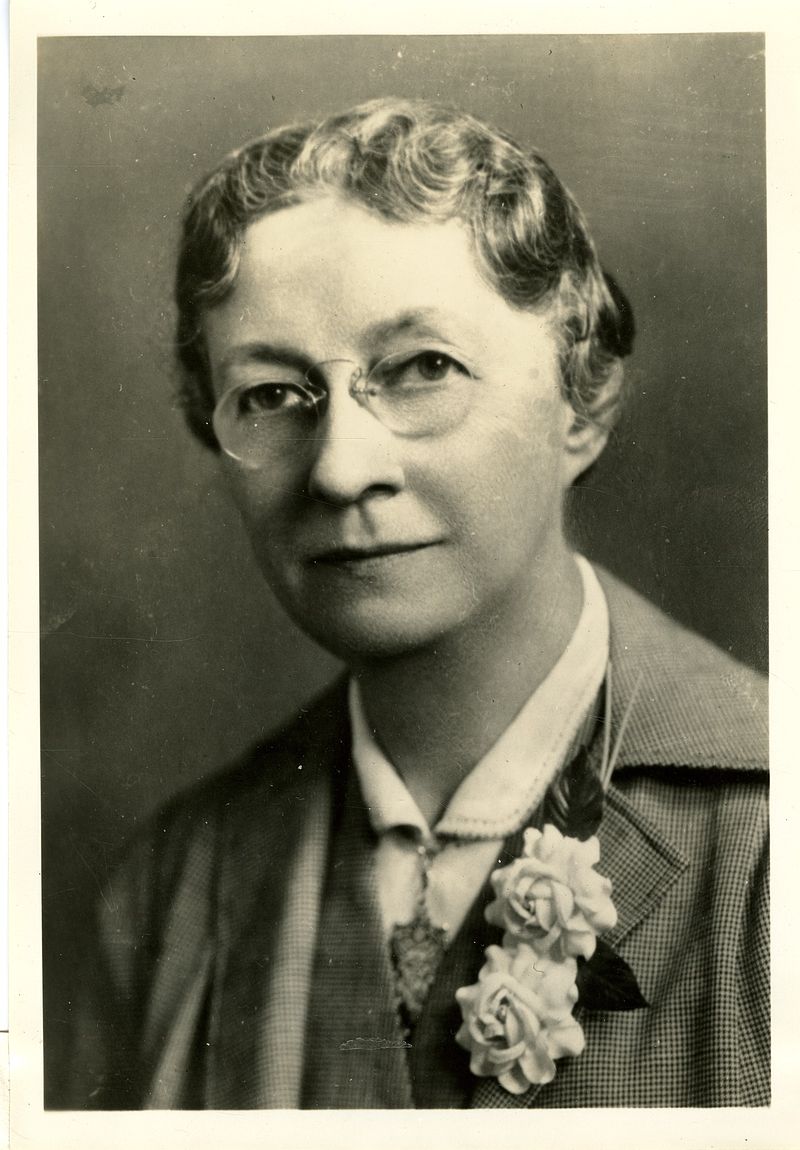
Chemist Mary Engle Pennington (1872-1952), an expert on the refrigeration of perishable foods, had just been chosen by the American Chemical Society as the 1940 recipient of the Francis P. Garvan Gold Medal to honor outstanding achievement in science by a woman. Pennington had attended the University of Pennsylvania (Ph.D., 1895) and worked at the U.S. Department of Agriculture, 1905-1919, before becoming a private consultant in 1922. Source. Acc. 90-105 – Science Service, Records, 1920s-1970s, Smithsonian Institution Archives: https://siris-archives.si.edu/.
The MOVE Bombing
Tragic event in which Philadelphia city police raided and bombed a residence when the group living there refused to vacate. Officials resorted to extreme measures resulting in an uncontrolled fire that destroyed 61 homes and left about 250 homeless. Ultimately, 6 adults and 5 children were killed.
Samuel V. Merrick
A prominent 19th century manufacturer and businessman, Merrick established Southwark Iron Foundry, which became one of the largest and most advanced of its time building engines for important Civil War naval vessels. Merrick co-founded the Franklin Institute and was first president of the Pennsylvania Railroad.
Smith Memorial Playground and Playhouse
An early dedicated play space for children, established in 1899, its founders Richard and Sarah Smith were influenced by the American Playground Movement which began in the mid-1880s. The site is unique in that it has always operated as a private institution on public land, and has been racially and economically integrated.
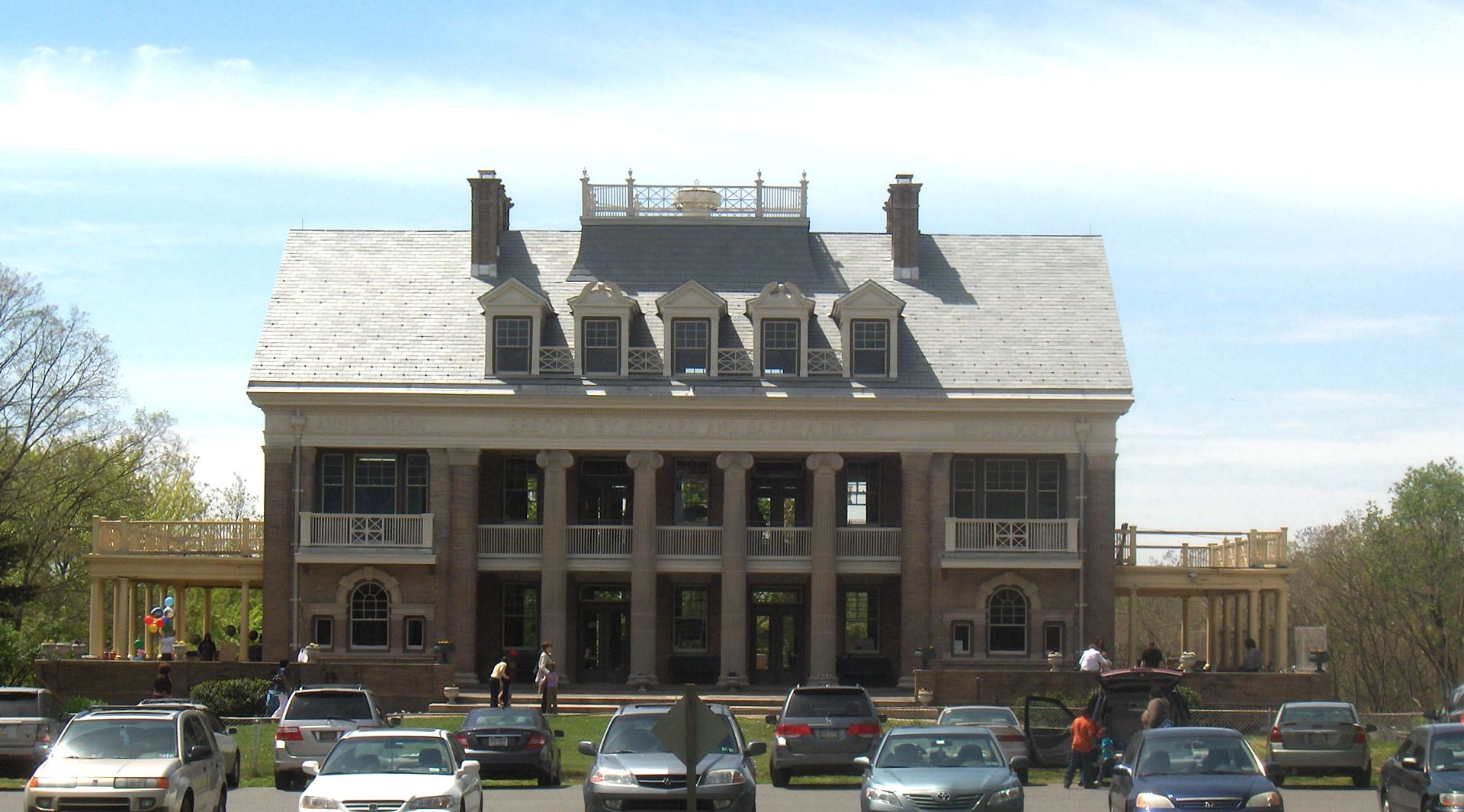
The Richard and Sarah Smith Playhouse (Ca. 1898) on Reservoir Drive, 0.4 mile west of 33rd Street and Oxford Street, Philadelphia, PA 19121. Architect, James H. Windrim. Wikimedia commons, public domain.
Other markers approved across the Commonwealth include:
Dr. James C. Hepburn (Milton, Northumberland Co.)
Dr. Hepburn was a medical doctor and missionary to Japan. Hepburn introduced western medicine to Japan and opened an academy that continues as a major university. He published an English/Japanese dictionary and developed a system of transcribing Japanese characters into the Latin alphabet called “Hepburn Romanization” still in use today.
Fairview Park (Delmont, Westmoreland Co.)
Property purchased here in 1945 became the first amusement park in PA owned and operated by African Americans. The park offered African Americans recreational opportunities denied them at amusement parks from which they were excluded.
Huber Coal Breaker (Ashley, Luzerne Co.)
Constructed in the 1930s by Glen Alden Coal Company, this breaker processed nearly 7000 tons of coal daily through the 1970s. To distinguish its product, the company sprayed color on its anthracite, creating “blue coal.” It was one of the first to utilize Menzies cones to separate coal and was first to use aerial disposal of waste by-products.
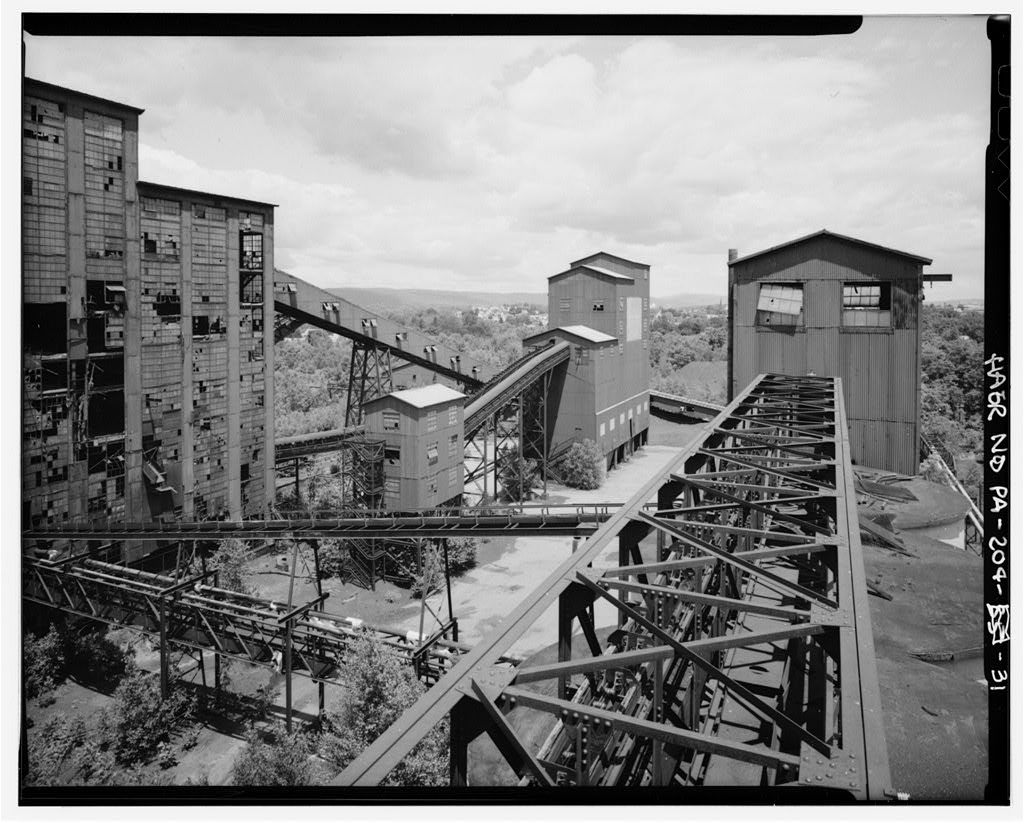
Historic American Engineering Record, Creator, and Glen Alden Coal Company. Huber Coal Breaker, 101 South Main Street, Ashley, Luzerne County, PA. Ashley Luzerne County Pennsylvania, 1968. Documentation Compiled After. Photograph. Retrieved from the Library of Congress, https://www.loc.gov/item/pa2251/. (Accessed June 12, 2017.)
Inez Mecusker (Corry, Erie Co.)
Mecusker was a noted soprano in the late 19th and early 20th centuries. Billed as the American Cantatrice, she appeared in Vaudeville, Broadway, and operas, and she toured with nationally-known bands, most notably, John Philip Sousa’s.
Anti-Federalist Movement / James Bell’s Tavern (Carlisle, Cumberland Co.)
During the development of the US Constitution, Anti-federalists met at a colonial tavern in south central PA. At the time, Cumberland County was the frontier and many residents here believed in limited government and secure civil rights and protested against eastern commercial, conservative domination.
Pennsylvania Canal – Western Division (Leechburg, Armstrong Co.)
Part of the PA Mainline Canal from Philadelphia to Pittsburgh which reduced the travel time between the two cities from 3 weeks to 4 1/2 days. Dam #1 at Leechburg supplied the remaining 37 miles to Pittsburgh with water and provided slack water for 7 miles above the dam.
The Repasz Band (Williamsport, Lycoming Co.)
Founded in 1831, it is one of the oldest continuously operating community bands in the US. The band played at the surrender of Lee at Appomattox and for the 150th anniversary of the Civil War. It also performed at two presidential inaugurations, for Theodore Roosevelt and Taft.
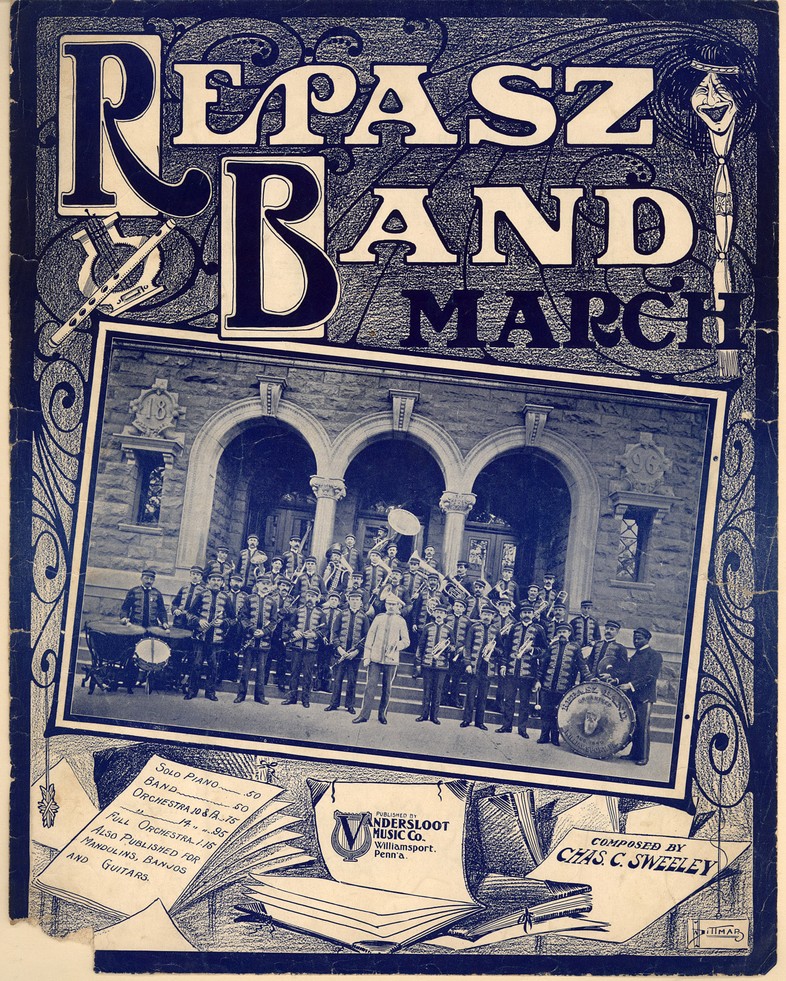
Sheet music for Repasz Band March, 1904. Source: http://library.duke.edu/digitalcollections/hasm.a2401/
Simon Girty (Pittsburgh, Allegheny Co.)
A frontiersman captured by the Indians as a youth in 1756, Girty lived among his Native American captors for several years, learning their language and culture. Following his release in 1764, he became an Indian interpreter and military representative of the British among Native American tribes during the American Revolution. A controversial figure, he fought against the US in the War of 1812.
For more information on PHMC historical marker program, including approval criteria and application details, please visit www.phmc.pa.gov/Preservation/Historical-Markers.
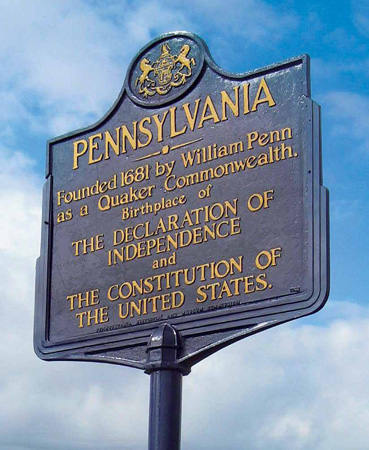
There is a misspelled name in the Marc Blitzstein marker’s wordage.
The correct spelling is “Virgil Thomson,” not “Thompson” as you have it.
I noted this error weeks ago and sent the department an email about it. But the misspelling has remained.
Thank you for bringing this error to our attention. I’ve corrected the blog post and sent your note to our Historical Markers staff.